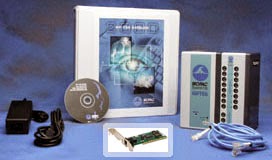Archive for March 2015
ECG Analysis | Physiological Changes in Response to Reporting
Physiological
responses can offer researchers key insights into the mental state of their
participants. Whereas human subjects can lie or misreport their emotions on a
self-report questionnaire, their physiological signals show the actual
truth. A quick rise in the recording
indicates a change in the subject’s emotions whether it be fear, anger, or
shame. Most studies concerning emotion shifts rely on heart rate data stemming
from ECG analysis and recording to see a participant’s reactions to the experimenters’ tests.
It is widely agreed that this is the true information that the analysis of the
ECG signal proves or disproves the study’s hypothesis. What if by simply
reporting on the emotion the researcher in fact influences changes in the
physiological response? That is what researchers Karim Kassam and Wendy Berry
Mendes sought to find out. They hypothesized that the awareness and conscious
assessment required by an individual for self-reporting of emotion may
significantly alter emotional processes. The researchers gathered one hundred
and twelve paid participants to take a series of tests designed to either induce
anger or shame (any individuals’ with depression or anxiety were excluded from
the study). Human subjects were either put into the anger, shame, or control
group and split by whether they were required to report their emotions during
the exam or not.
 Their physiological responses (heart rate, impedance
cardiography, cardiac output) were recorded using a BIOPAC MP150 Data Acquisition research system connected with
an ECG amplifier. The researchers found that in the anger group that
participant’s exhibited different physiological responses from those who were
not required to report. The shame condition however, seemed to show no
significant difference between the two groups (reporting and not reporting).
This study suggests that the act of reporting may have a substantial impact on
the body’s action to emotional situations. The data seems to point that
individuals who are provoked (anger) are likely to exhibit different
physiological responses when reporting. The knowledge that they will have to
explain their heightened emotions brings a rationale to an otherwise irrational
behavior. Shame on the other hand causes individuals to ruminate or
self-reflect, which would explain the little difference between the two
groups.
Their physiological responses (heart rate, impedance
cardiography, cardiac output) were recorded using a BIOPAC MP150 Data Acquisition research system connected with
an ECG amplifier. The researchers found that in the anger group that
participant’s exhibited different physiological responses from those who were
not required to report. The shame condition however, seemed to show no
significant difference between the two groups (reporting and not reporting).
This study suggests that the act of reporting may have a substantial impact on
the body’s action to emotional situations. The data seems to point that
individuals who are provoked (anger) are likely to exhibit different
physiological responses when reporting. The knowledge that they will have to
explain their heightened emotions brings a rationale to an otherwise irrational
behavior. Shame on the other hand causes individuals to ruminate or
self-reflect, which would explain the little difference between the two
groups.
Wireless Physiology | Psychophysiological Measures of Emotion
Emotional reactions influence, and may help predict, our decisions and
offer valuable information for communication and neuromarketing researchers, but
emotion is difficult to measure explicitly. Emotional responses are complex
phenomena consisting of multiple components, including evaluation/appraisal,
subjective feeling, expression, and physiological reaction. This mix of
components is difficult to measure. Researchers can interview or survey
participants about their feelings—typical measures include traditional
Likert-type questions, open-ended questions, or pictorial scales—but
self-reporting doesn’t easily convey true or complete emotional response.
Self-reporting is further complicated by the fact that participations often
choose different terms to describe their feelings or respond that they feel
nothing. Blending self-assessment with physiological changes that reflect
visceral responses provides an unfiltered representation of
emotion.
 Significantly, EDA can provide time-stamped information for
moment-to-moment reaction measurement throughout a message/stimulus presentation
(such as an advertisement).Combining physiological data with self-reported data
helps provide a more complete, more accurate understanding of a participant’s
emotional reactions. Unobtrusive, wearable wireless physiology devices (such as BioNomadix
BN-PPGED from BIOPAC Systems, Inc.) can
provide continuous and precise measures of nervous system activity, such as EDA,
ECG, and RSP.
Significantly, EDA can provide time-stamped information for
moment-to-moment reaction measurement throughout a message/stimulus presentation
(such as an advertisement).Combining physiological data with self-reported data
helps provide a more complete, more accurate understanding of a participant’s
emotional reactions. Unobtrusive, wearable wireless physiology devices (such as BioNomadix
BN-PPGED from BIOPAC Systems, Inc.) can
provide continuous and precise measures of nervous system activity, such as EDA,
ECG, and RSP.
Sympathetic nervous system (SNS) activity provides objective data for
assessing emotional reactions. Electrodermal Activity (EDA) is a popular SNS
measure. EDA is basically an index of the electrical activity of the skin; sweat
glands in the skin are filled with tiny amounts of sweat and sweat contains ions
that conduct current, which can be detected and recorded. Increases in EDA
reflect increases in sympathetic nervous SNS activity. EDA is also referred to
as skin conductance (SCR, SCL, etc.) or galvanic skin response
(GSR).
 Significantly, EDA can provide time-stamped information for
moment-to-moment reaction measurement throughout a message/stimulus presentation
(such as an advertisement).Combining physiological data with self-reported data
helps provide a more complete, more accurate understanding of a participant’s
emotional reactions. Unobtrusive, wearable wireless physiology devices (such as BioNomadix
BN-PPGED from BIOPAC Systems, Inc.) can
provide continuous and precise measures of nervous system activity, such as EDA,
ECG, and RSP.
Significantly, EDA can provide time-stamped information for
moment-to-moment reaction measurement throughout a message/stimulus presentation
(such as an advertisement).Combining physiological data with self-reported data
helps provide a more complete, more accurate understanding of a participant’s
emotional reactions. Unobtrusive, wearable wireless physiology devices (such as BioNomadix
BN-PPGED from BIOPAC Systems, Inc.) can
provide continuous and precise measures of nervous system activity, such as EDA,
ECG, and RSP.
Read
a case study at “Hooked on a Feeling: Implicit Measurement of Emotion Improves Utility of Concept Testing.” Researchers conducted a message-testing study in which
they measured physiological
arousal (via EDA), emotional valence (via continuous rating dial data), and discrete
emotions (retrospectively reported emotional
reactions), among other measures. Researchers used a BIOPAC MP150 data
acquisition system and wireless EDA BioNomadix module to collect EDA while
participants viewed each ad, and a BIOPAC variable assessment transducer to
assess in-the-moment feelings of positivity or negativity. E-Prime was used to
allow for precise synchronization across stimuli presentation and data
collection.
Data Logging | Improvements in Wireless Wearables for Physiology Research
 Researchers have long recognized the need for a better tool for Electroencephalogram
(EEG) ambulatory monitoring. While many have come up with certain wired
solutions, there has not been a valid solution for long term logging or
telemetry. BIOPAC Systems, Inc. has now introduced the brand new BioNomadix
Logger, a true wireless and wearable ambulatory monitoring device. The Logger
allows researchers the option for long term monitoring with its ability to
store data for later upload or it can also telemeter back to a computer for
live recording in a lab setting. The new BioNomadix logger truly allows
you to conduct physiology experiments anywhere and everywhere – you can log up
to 24 hours of high-quality data outside the lab and includes ECG,
EEG, EMG, EOG, EGG, EDA, Pulse, Respiration, Temperature, Cardiac Output, Heel
& Toe Strike, Clench Force, Accelerometer, & Goniometry signals. The
device is small in size, only about the size of your hand, making it easy for
subjects to take it with them in their everyday activities.
Researchers have long recognized the need for a better tool for Electroencephalogram
(EEG) ambulatory monitoring. While many have come up with certain wired
solutions, there has not been a valid solution for long term logging or
telemetry. BIOPAC Systems, Inc. has now introduced the brand new BioNomadix
Logger, a true wireless and wearable ambulatory monitoring device. The Logger
allows researchers the option for long term monitoring with its ability to
store data for later upload or it can also telemeter back to a computer for
live recording in a lab setting. The new BioNomadix logger truly allows
you to conduct physiology experiments anywhere and everywhere – you can log up
to 24 hours of high-quality data outside the lab and includes ECG,
EEG, EMG, EOG, EGG, EDA, Pulse, Respiration, Temperature, Cardiac Output, Heel
& Toe Strike, Clench Force, Accelerometer, & Goniometry signals. The
device is small in size, only about the size of your hand, making it easy for
subjects to take it with them in their everyday activities. The BioNomadix Logger fills the void where other more non-accessible devices could not. A study performed by researchers at the University of Minho aimed to create a wireless, wearable EEG ambulatory monitoring solution through a combination of other devices. They tested their tool against other devices (such as BIOPAC’s B-Alert X10) to measure the quality of the EEG signal. Although the researcher’s tool was able to record high quality data, it was bulky and could only be used on subjects in a lab. The BioNomadix Logger thus picks up where this study left off, allowing subjects to log data while performing everyday activities. The Logger’s small size also bypasses the bulky nature of other EEG ambulatory monitoring devices. The BioNomadix Logger thus represents a great step forward in long term wireless, wearable, ambulatory monitoring and data logging devices.
